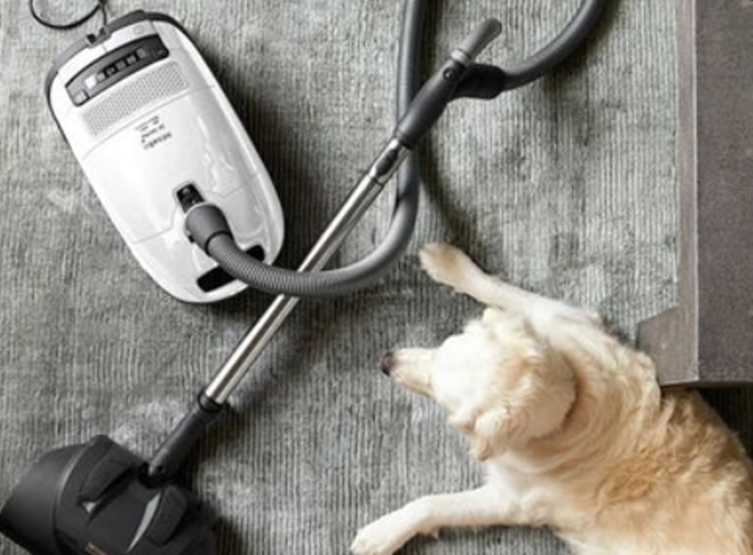Every year, millions of vacuums end up in landfills when many could be repaired, recycled, or repurposed. Careless disposal creates environmental hazards from plastic waste and lithium-ion batteries while wasting perfectly good parts that could extend other machines’ lives. Even functional older models often get discarded prematurely due to minor, fixable issues. In this article, we’ll walk through the essential steps to responsibly handle a malfunctioning vacuum while protecting both your wallet and the environment.

How Can You Diagnose Common Vacuum Problems?
Quick Fixes for Common Issues (Clogs, Belt Replacements)
Before declaring your vacuum dead, check for these easily solvable problems that mimic complete failures. Loss of suction usually indicates a clog somewhere in the system – start by removing the hose and checking for blockages in the wand, beater bar, and filter compartments. Many modern vacuums have quick-release mechanisms that make this inspection simple. Broken drive belts are another common issue, especially in upright models, causing the brush roll to stop spinning. Replacement belts cost under $10 and install in minutes with basic screwdrivers. Filters that haven’t been cleaned in months can severely reduce airflow – wash or replace them according to the manufacturer’s guidelines. Electrical issues might just be a tripped thermal cutoff that resets after cooling down for 30 minutes.
When Repair Costs Outweigh Replacement
Some problems do justify replacement rather than repair. If the motor burns out, repair costs often reach 60-80% of a new vacuum’s price. Cracked plastic housings or broken mounting points can compromise structural integrity beyond practical repair. Older vacuums with deteriorating wiring throughout the unit become safety hazards. Consider the vacuum’s age too – investing $100 to fix a 10-year-old model makes less sense than putting that money toward newer technology. Check warranty coverage first; many manufacturers offer free repairs for defects within 3-5 years. Online repair forums can help estimate repair costs versus replacement value for your specific model and issue.
How Do You Protect Personal Data From Smart Vacuums?
Modern robot vacuums store surprising amounts of personal data, including your home’s floor plan, cleaning schedules, and WiFi network credentials. Before disposing of any connected vacuum, perform a full factory reset through the manufacturer’s app to erase this sensitive information. Remove the vacuum from your account in the companion application to unlink it from your profile. For extra security, manually delete the device from your router’s connected devices list. Some advanced models even store voice command data – check the privacy settings to ensure complete data erasure. If the vacuum won’t power on to allow software resets, removing its internal storage chip physically destroys the data.
What Valuable Parts Can You Salvage?
Even non-working vacuums contain components worth saving. HEPA filters from quality models often fit multiple units and can serve as emergency replacements. The power cord alone might be worth $15-$30 as a replacement part for another appliance. Brush rolls with intact bristles and bearings make excellent spare parts. High-end models may have valuable motors that still work despite other failures. Detachable hoses and attachments frequently outlast the main unit and fit newer models. Lithium-ion batteries from cordless vacuums can power DIY projects if still functional. Keep the manual and any specialty tools that came with the vacuum – these often help with future repairs. Organizing salvaged parts in labeled containers creates a useful repair kit for your next vacuum.
Where Can You Recycle Old Vacuums?
Most communities offer appliance recycling through municipal waste programs, often at no cost. Electronics retailers frequently accept small appliances for recycling regardless of purchase origin. Vacuum repair shops may take old units for parts harvesting and proper disposal. Some manufacturers run take-back programs that responsibly recycle their products. For vacuums containing lithium-ion batteries, find a certified e-waste recycler to handle these fire-risk components safely. Call ahead to confirm acceptance policies, as some locations charge small fees for certain items. Remove any remaining dust or debris before recycling to make the process cleaner for workers. Proper recycling keeps hazardous materials out of landfills while recovering valuable metals and plastics for reuse.
When Does Donation or Resale Make Sense?
Vacuums with minor issues can often find second lives through donation or resale. Local charities frequently accept working appliances for families in need. Vocational schools sometimes want non-working units for repair training programs. Online marketplaces work well for selling vacuums “as-is for parts or repair” to hobbyists and technicians. Include detailed descriptions of known issues and high-quality photos to set proper expectations. Even older working models have value for garage cleaning, workshop use, or college students. Just be transparent about any performance limitations or needed repairs. Consider giving away to neighborhood groups or Buy Nothing communities if selling isn’t worth the effort.
What Should You Consider When Replacing?
Your failed vacuum’s weaknesses should guide your replacement choice. Frequent clogging suggests needing a model with better airflow design and easier access points. Burned-out motors indicate you need more power or a unit with better thermal protection. Consider upgrading to features that address your specific pain points, like self-emptying bases for allergy sufferers or detachable handheld units for stairs. Look at durability ratings and warranty terms – sometimes paying slightly more upfront saves money long-term.

Conclusion
Knowing how to dispose of vacuum cleaner equipment properly completes your appliance’s lifecycle responsibly. Start with diagnosis and simple repairs before considering replacement. Always erase data from smart models and salvage usable parts. Recycling keeps hazardous materials out of landfills while donation gives functional units second lives. When upgrading, let your old vacuum’s failures guide smarter purchasing decisions. For those ready to upgrade, newer robotic models from eufy offer significant improvements in convenience and cleaning power. Following this checklist ensures your next vacuum serves you well while minimizing environmental impact from disposal.
